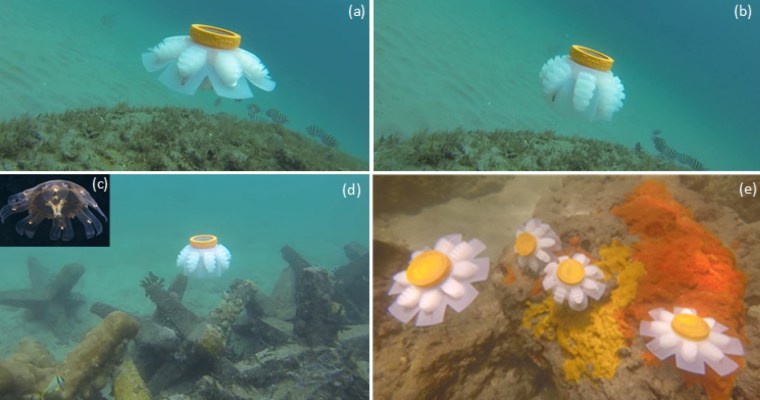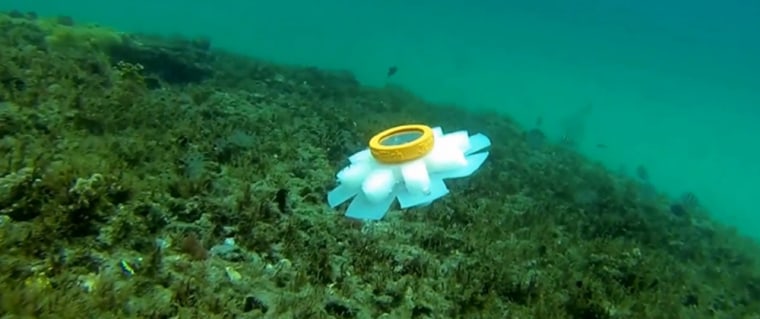A squishy robotic jellyfish that can ride ocean currents and squeeze harmlessly into tight spaces could soon give scientists a better tool for studying coral reefs and tracking their response to waters that are warming as a result of climate change.
The robo-jellyfish is made of a soft rubber that feels “a bit like a stress ball,” said Erik Engeberg, an associate professor of engineering at Florida Atlantic University and the leader of the team developing the robot. Its eight battery-powered tentacles siphon and expel seawater to propel the bot in a slow, almost hypnotic manner that makes it look very much like a real jellyfish.
The scientists recently tested multiple prototypes of the robot along the South Florida coast and described the results in a paper published online Sept. 18 in the journal Bioinspiration & Biomimetics.
The robot is designed to measure temperature and salinity and other information about the underwater environment without harming the reefs' delicate structures or disturbing the creatures living among them. That's not always possible with the underwater drones sometimes used to conduct reef research.
The drones' noisy propellers can gouge reef structures and scare marine life, said Dimitri Deheyn, a researcher with the Scripps Institution of Oceanography in La Jolla, California, who isn't involved with the robotic jellyfish project.
The robo-jellyfish could also protect human divers — by keeping them out of hazardous underwater environments. "Every time someone goes in the water, it’s a risk," Engeberg said. "Shark attacks, drowning, decompression sickness — there’s a lot of things that can go wrong. That's why it's good to have these autonomous systems that can monitor these rapidly changing areas."

The prototypes store the information onboard and must be recovered so that the data can be downloaded for study. Future versions should be able to transmit the information wirelessly, Engeberg said, though it would most likely be a few years before the bots are ready to be deployed in the wild.
The inexpensive bot — Engeberg said the prototypes cost only about $200 apiece to build — are another example of biology-inspired marine research vehicles that have become popular in recent years. Scientists have also experimented with robotic manta rays and robo-fishes, among other animal-inspired tech.
“I think it’s the future of studying all ecosystems — not just the coral reef,” Deheyn said. “If you want to study nature, make an instrument that blends into nature.”
